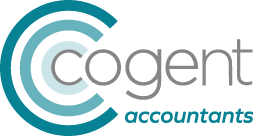Ever landed a new contract only to lose it later or lose goodwill with a client? Sometimes things go wrong, and at other times we just set the wrong expectations and then fail to deliver or maintain the right relationship.
In the second part of our guide on contract expectations, we look at how you can successfully manage client expectations and why it is vital for contractors and freelancers across all sectors.
The quality of the final product, the experience throughout the project, and effective communication are key to achieving client satisfaction, which could land you more work or referrals.
Understanding the customer
You can’t manage a relationship with your client if you don’t understand them or their business.
Remember, clients not only evaluate the quality of the final work you conduct for them but also their experience throughout the project.
They expect the completed work to meet their needs and meet the expectations you set.
Where this isn’t achieved, dissatisfaction is likely. Contractors and freelancers must actively manage the client’s perception of their efforts and the project’s quality.
Clients’ impressions matter significantly: they need to feel heard, respected, and kept informed.
Even if a professional strives to achieve the specified quality, if the client perceives it as insufficient, the resulting quality will be deemed deficient.
The disconnect
Problems often tend to arise when communication falters and a disconnect between the contractor and client grows.
Discrepancies between the professional’s and client’s expectations can lead to frustration, disagreement, and conflict. These issues may stem from:
- A poor setting of goals
- Inappropriate means of measuring performance
- Issues with trust
- Lack of cooperation
- Misguided priorities
- No or little communication
- Uncertainty about the means and methods of delivering the project
Identifying and eliminating these issues will be essential for meeting client expectations effectively and retaining goodwill.
By aligning perceptions and maintaining clear, consistent communication, professionals can ensure a successful project and a satisfied client.
Setting expectations
Our latest article looked at the inception of a project and how contractors should go about establishing the right expectations.
It is important to quickly revisit this, as it plays a large part in the ongoing management of a contract and relationship.
At the beginning of a project, stakeholders may have unrealistic expectations regarding key performance steps and outcomes.
You must address these expectations early to avoid disappointment or conflict. Aligning promises with realistic understandings sets the stage for successful project execution and delivery.
Project execution
Just as important as the setting up of the project is the initial execution. Initial meetings with key stakeholders are vital. These should cover plans, processes, practices, procedures, and expectations.
Establishing accepted means and methods for conducting the work, addressing issues and risks associated are crucial in fostering an effective working relationship.
Clarifying roles and responsibilities, scheduling tasks, and managing resource tracking and information flow are essential for smooth project execution.
Monitor changes
Make sure you continue to monitor the client’s satisfaction throughout the project. Identify and respond to any perceived changes in satisfaction levels.
Understanding the cause of increased satisfaction can help sustain it while identifying causes of dissatisfaction is crucial for addressing issues.
Conduct informal or formal assessments to maintain a clear understanding of client satisfaction. Something as simple as a quick catch-up call once a month can help, especially if much of your work is now performed remotely.
Commitment management
Maintaining good relations can sometimes lead to over-promising. Avoid this by clearly conveying the certainty of promises and confirming them in writing.
If necessary, take time to research issues before making realistic promises to a client. This should be an ongoing process throughout your contract with them.
Be prepared
Every project has potential problem areas. Being prepared with possible solutions enables quick responses and effective resolution, turning negative situations into positive customer reactions.
Ask customers for feedback on how to improve processes and products. Recognise and act on good suggestions and share the results with the customer to show appreciation and transparency.
Final thoughts
Clients’ opinions are shaped by their interactions with project personnel, management, and other stakeholders such as contractors and consultants.
Even if the team performs optimally, any dissatisfaction from the client can result in the work being deemed deficient.
Managing clients’ expectations involves keeping them informed and explaining unexpected situations.
It requires understanding the client’s team personalities and effective communication. Even the best-laid plans fail. Keeping all parties informed helps manage expectations and resolve issues.
